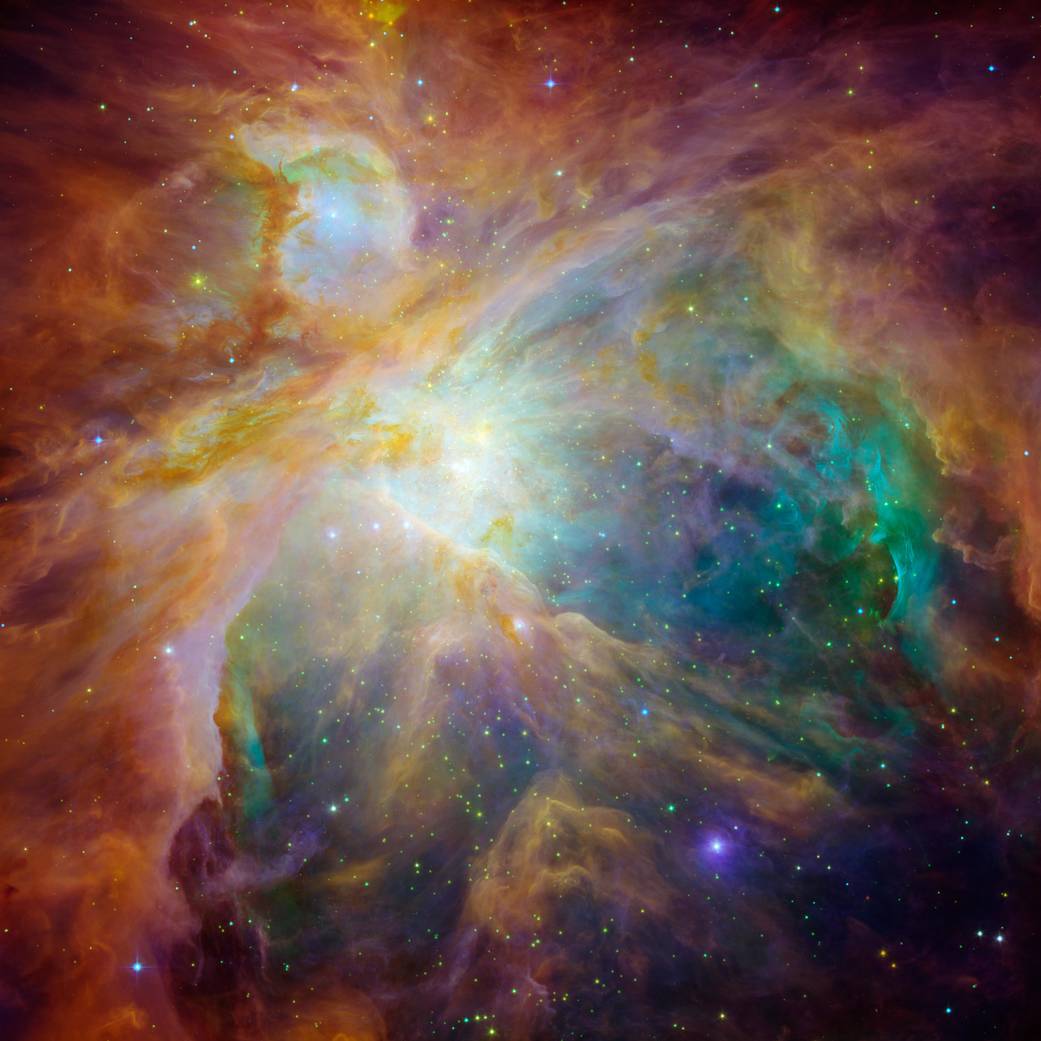Chaos at the Heart of the Orion Nebula
The Orion Nebula (M42) is so named because it lies within Orion the Hunter, a constellation that dominates the winter sky. To find the nebula, look below Orion’s Belt where his sword hangs. Your eyes alone will see the center star as fuzzy. Binoculars help, but also reveal more fuzz. Look through a telescope, however, and you’ll never forget it. For here lies one of the showpiece celestial objects — a stellar nursery that, after being observed for hundreds of years, still has a lot to reveal.
The Orion Nebula’s position in our galaxy is well-known. If we could view the Milky Way from above, it would appear as a pinwheel with four spiral arms. The galaxy contains hundreds of billions of stars and massive amounts of gas and dust. Our solar system resides in the Orion Spur, which sits between the Perseus and Sagittarius arms, about halfway out from the galactic center.
Our earthbound view is different. On a clear summer night in the Northern Hemisphere, the Milky Way’s glow stretches from Cassiopeia in the northeast to Scorpius in the south. From this vantage point, we’re looking along the galaxy’s rim. Toward Scorpius is the central part of the Milky Way. Rather than seeing a field of blazing stars, our view is obscured by huge clouds of dust and gas.
In the winter, we see the sky opposite the stellar traffic jam found toward the galaxy’s center. The winter Milky Way is there, but you need a dark sky to see it with unaided eyes. The winter sky is the brightest of the seasonal skies — it contains the highest concentration of bright stars — and its most famous representative is Orion.
Although the background sky is fainter here than in summer, this area still contains much of the gas and dust that’s so prevalent throughout the galaxy. In fact, the Orion Nebula represents only the tip of the proverbial iceberg. M42 is a small part of a huge complex called the Orion Molecular Cloud (OMC). Actually, this complex is divided into OMC-1 and OMC-2. OMC-1 lies only 1' northwest of the Trapezium — a small cluster of newly formed stars at the Orion Nebula’s heart — and contains all the visible nebulae.
